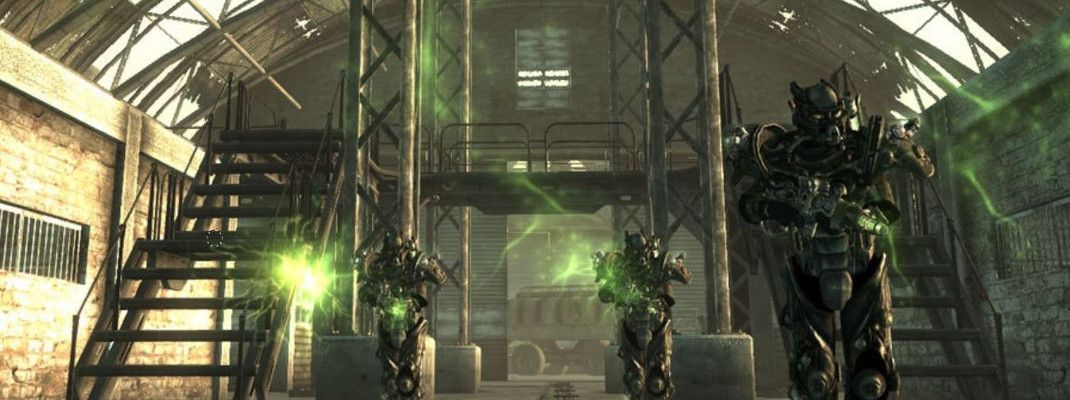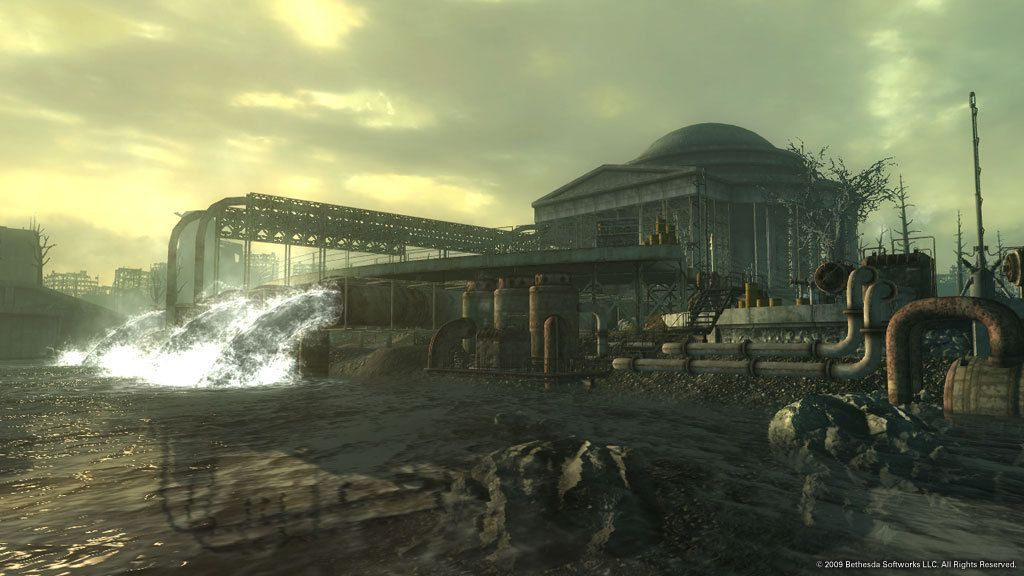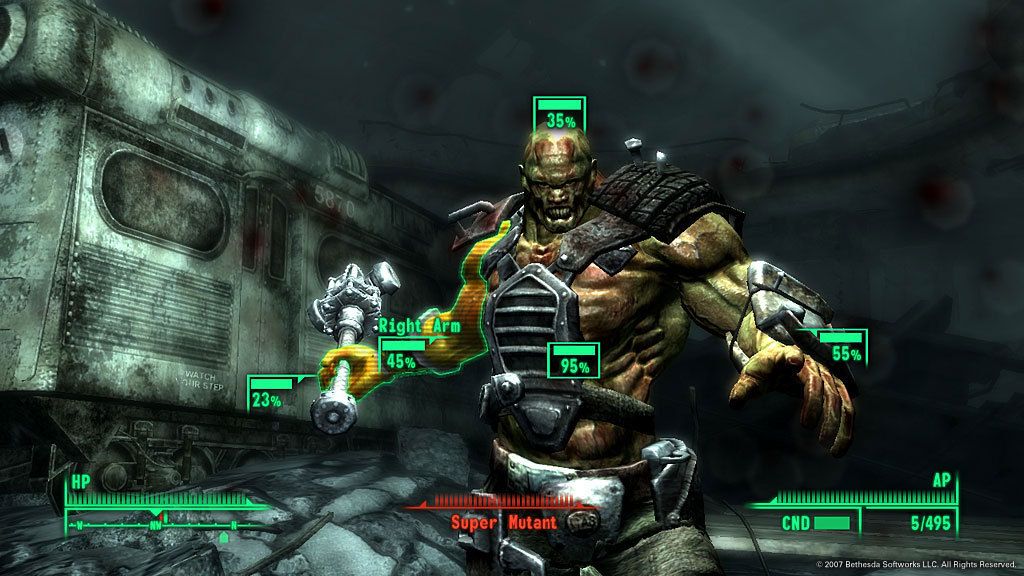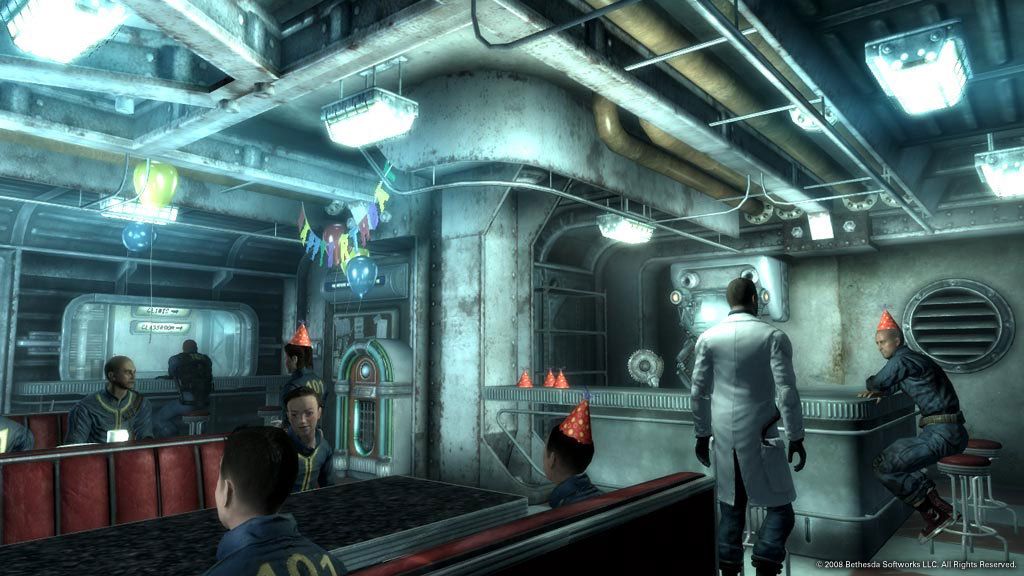Member the games you used to play? We member. The basement at the Hardcore Gamer office has a section known as the Crust Room, with an old grey couch and a big old CRT TV. All the classic systems are down there collecting dust, so in an effort to improve the cleanliness of our work space, we dust off these old consoles every so often and put an old game through its paces, just to make sure everything stays in working order. We even have a beige computer with a floppy disk drive.
Fallout 3 marked a shift in the Fallout series. Bethesda had acquired ownership of Fallout from Interplay and decided to do away with the isometric turn-based combat RPG mechanics and created The Elder Scrolls V: Post Nuclear War Washington DC which was later renamed Fallout 3 at the insistence of their marketing department. The shared DNA between The Elder Scrolls titles and the Bethesda Fallout games is obvious to anyone who has set foot Tamriel but in spite of this the two franchises are able to coexist with their independent identities. Without taking away from the significance of the original Fallout titles, the newer first-person approach proved to be a positive change for the series
Many Elder Scrolls comparisons were made to Fallout 3 after it was released, especially since The Elder Scrolls IV: Oblivion was still fresh in our consciousness, the environments could not be more different. Tamriel was a land that displayed nature in lush and vibrant splendor, while the remains of our nation's capitol looked as though an Oblivion gate had exploded and laid waste to the District of Columbia. When the player first stepped out of the underground bunker they were met with desolate landscape, littered with the rubble of once great buildings as far as they eye could see.
The landscape of Fallout 3 was one of the game's most memorable features. Great care went into making a vast and detailed environment, resulting in a realistic and grim imagining of what this country could look if things were go bad. The urban areas were filled with damaged roadways, bridges and abandoned destroyed vehicles among the rubble. Whether the player was wandering through city streets, the subway, building interiors or the open land they saw constant reminders of the destruction of war. To bring life to this nightmare real world locations were included, such as Arlington Cemetery and the ruins of the White House and other notable government buildings and monuments. Neighborhood houses lay in ruins, with tattered books and ruined furniture showing what could have been a normal family household before the bombs fell.
Venturing out of the safety of the vault introduced to the player to the inhabitants of this nuclear wasteland. Scorpions, mole rats and flies had all grown to mammoth sizes and had become much more aggressive. A benefit of the nuclear war was that crowds in public areas were no longer an issue, but the few and far between humans usually involved violent raiders and bandits. Many survivors had mutated into what became known as ghouls, named that for their resemblance to the undead. There were also super mutants, who were essentially humans that mutated into large orcs from the high exposure to radiation.
In a world with no shortage of ill-tempered inhabitants combat was inevitable and one of the weaker aspects of Fallout 3 was the basic combat mechanics. Combat felt rather clunky and melee battles were often won by following the strike, step back, repeat formula. To address the poor combat controls, Fallout 3 included the VATS system, which allowed players to freeze time to aim at specific enemies or specific body parts, stating what the hit percentage is for each target. After selecting the appropriate targets, the attacks played out in a more cinematic slow motion where players could see their gunfire shatter their enemies head or rip an arm out of the socket. This feature made combat go from the game's weak links to one of its more interesting features which has continued to remain in some capacity in the subsequent Fallout titles.
Fallout 3 takes place in the year 2277 on on The Lone Wanderer's 19th birthday. The Wanderer grew up confined to the safety of Vault 101, but this changes when his father unexpectedly leaves the vault. This naturally causes a bit of a situation down at Vault 101 and mild irritation to the Overseer, resulting in a prison style lockdown but for the sake of making the game interesting the Wanderer pulls off a daring escape from the vault and begins the search for their father James, a scientists who's motives for escape are unclear at this point. One of the earlier destinations the player is instructed to visit is the town of Megaton, which has the distinct feature of having a massive nuclear warhead in the center of town. Characters of the more malicious persuasion may test whether or not said warhead is still armed and possibly turn Megaton into a crater if they so desire.
Which brings us to what really made Fallout 3 such a great game: choice. There is a linear story path but the game is generous with the liberties the player may take with it. There all numerous side quests and stories that can be done while the main objective is put on hold and there are multiple ways to complete the different missions. NPCs can be bribed or intimidated to influence their behavior. The player is free to act however they desire but there is a karma system in place the can go in either direction. Helping out NPCs in need or completing quests the "good" way can increase it, while stealing or wantonly killing a non hostile NPC and shift one's karma in a negative direction. Karma can influence how NPCs react to the player and can even influence the ending. The ending sequence in Fallout 3 isn't very cinematic, but it's interesting because of how it changes. There are a few different main endings, based on how the player chooses to handle the final mission, but in the epilogue the game recounts the exploits of the Lone Wanderer and covers the different choices the player made and what their impact may have been.
With the changing of development studios, Fallout 3 was a departure from the previous. The tone was more serious than earlier entries, but still managed to keep some of the Fallout style humor. The shift to first-person action RPG likely caused some apprehension with long time Fallout fans, but the end result was one of the best games from 2008. Several expansion packs were released via DLC to extend the already massive game. Fallout 3 is enjoyable on any of the available platforms, Xbox 360, PlayStation 3 or PC, but it is most recommended for play on PC if for no other reason than the extensive amount of fan created mods that are available.
Want to Member some more old games we love? You can see all our Members here.




